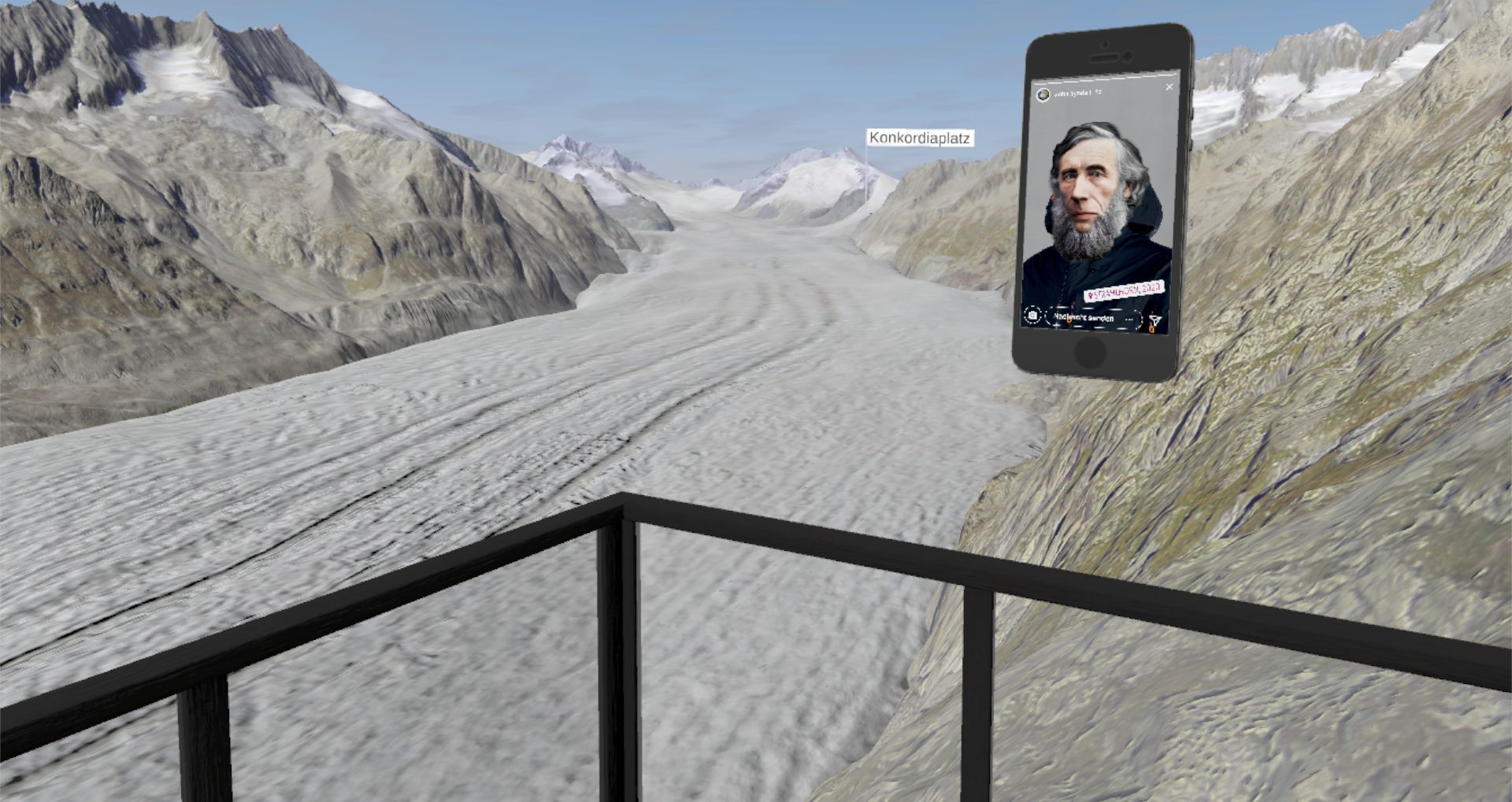»The melting of the high alpine glaciers is a formidable illustration of the effects of human-induced global warming. Through 3D glasses, the “Expedition 2 Degrees” takes us into a virtual world around the Great Aletsch Glacier. There, we meet natural scientist and Matterhorn pioneer John Tyndall, who lived from 1820-1893. Together with Tyndall, we travel in a time-lapse through the centuries and also take a virtual look into the future, where we see rocks, rubble and water where today there is still a glittering and fascinating ice landscape.«
Rita Schwarzelühr-Sutter

Three questions for Noemi Chow und Niklaus Heeb
How did the idea for Expedition 2 Grad come about?
The idea for Expedition 2 Grad came about in light of a bachelor's thesis by Noemi Chow, a graduate in the field of Knowledge Visualization who is currently active in the Knowledge Visualization research group. The outcome was an information film on the causes and consequences of the retreat of the Great Aletsch Glacier. These visualisations of the future are comprised of 3D models based on scientific measurements and the latest scenario projections from the University of Fribourg.
In the intensive dialogue with the glaciologists, it soon became clear that the issue of glacier retreat as a consequence of global warming required new and more richly involving forms of communication. Thus, the idea arose of translating the retreat of the glacier into virtual reality and to make this high alpine drama accessible to a broad audience. This created the basis for the multi-year and interdisciplinary research work.
What was your personal high point in the development process for Expedition 2 Grad? Was there a low point?
We have experienced a tremendously fruitful interdisciplinary cooperation: A team of more than ten experts in geography, glaciology, environmental psychology, pedagogy, development and exhibition design – all united with the common goal of making this unfolding drama in the high alpine region more tangible.
The high point for all of the participants was the opening of the exhibition in the Swiss National Park. It was moving to see just how positively people responded – from young to old, and laypeople to experts. The virtual experience is an impressive exhibit. For the first time, visitors can experience the retreat of the glacier in time lapse, personally and up-close, as the glacier essentially “disappears under their own feet”.
Using intelligent storytelling and emotional images, we were able to reach a large audience for the purposes of enlightenment and awareness-raising.
Where do you see your project in five years?
The project is pioneering in the area of environmental education and awareness. The response and interest that we’ve seen to date has been enormous. We’ve already been able to present the VR experience in numerous locations, museums and events across Switzerland. The demand is as high as ever, and if everything goes well, a tour of Germany is likely. Berlin is already on the schedule.
We are convinced that the mediation of current environmental and social issues with new immersive possibilities has enormous potential. At this time, we are in the publication phase of another, even larger VR Glacier project: the “VR Glacier Experience”. A visitor centre with seven VR stations has recently opened in the Morteratsch area in Upper Engadine. There, glacier retreat and the interrelationships with the water balance as well as possible measures to slow down glacier loss can all be experienced in the form of virtual tours.
People will continue to hear from us, and we hope that our work will provide the general public and decision-makers with vital impetus so that the transformation into a post-fossil age – which we urgently need to make as a society – progresses more quickly and more sustainably.

